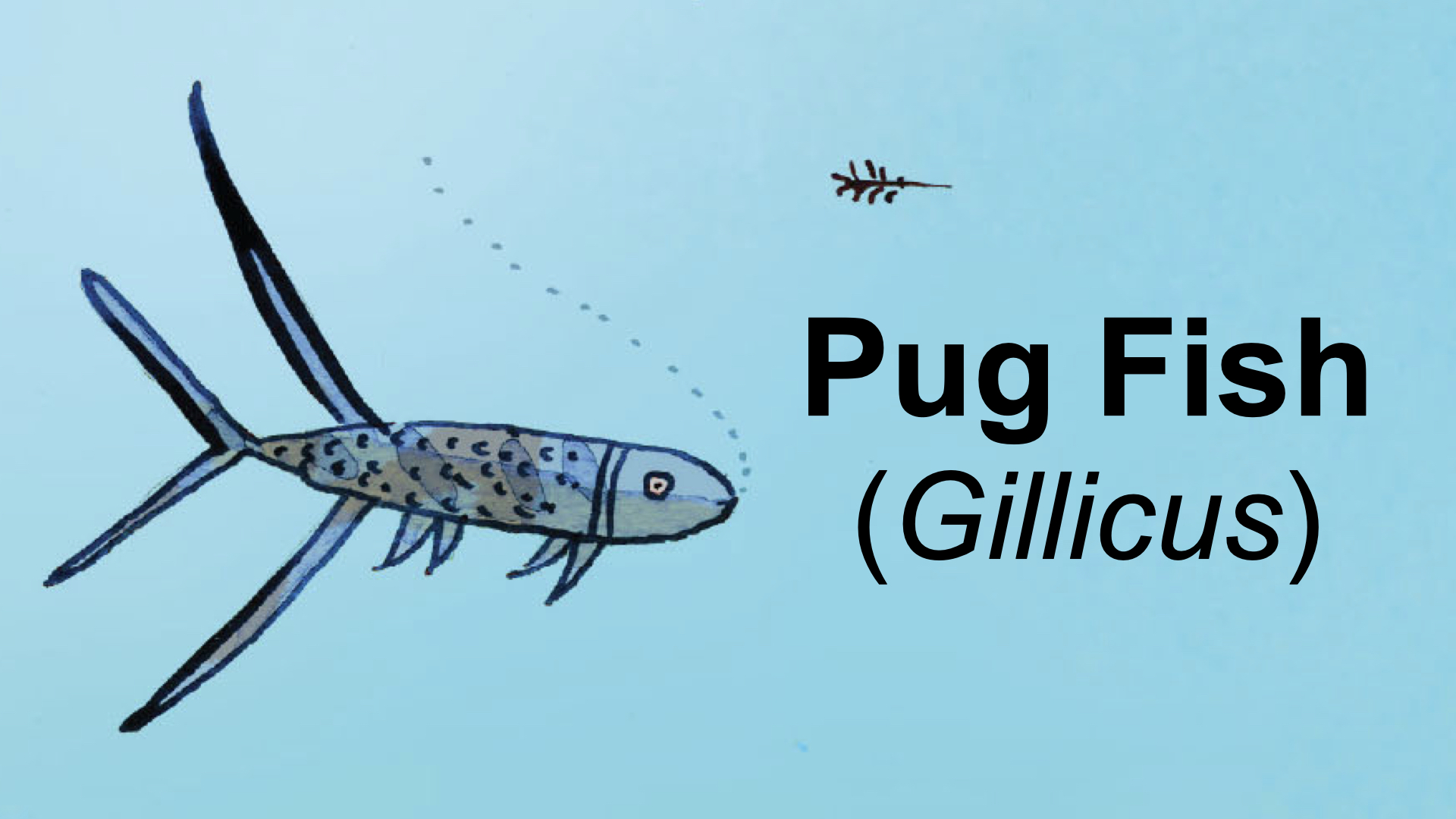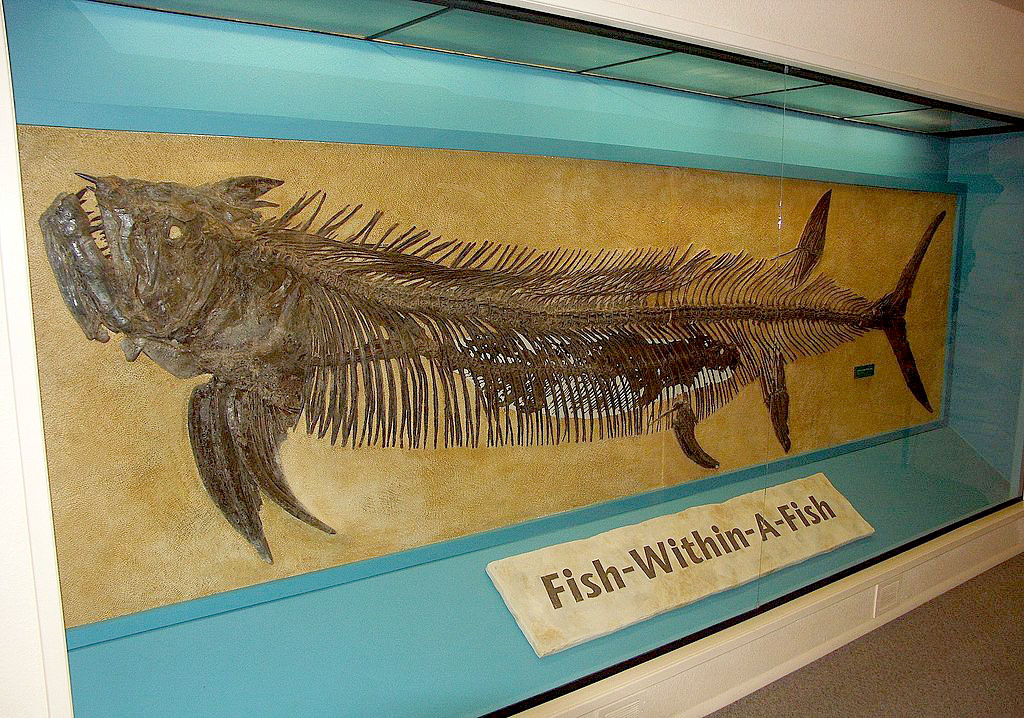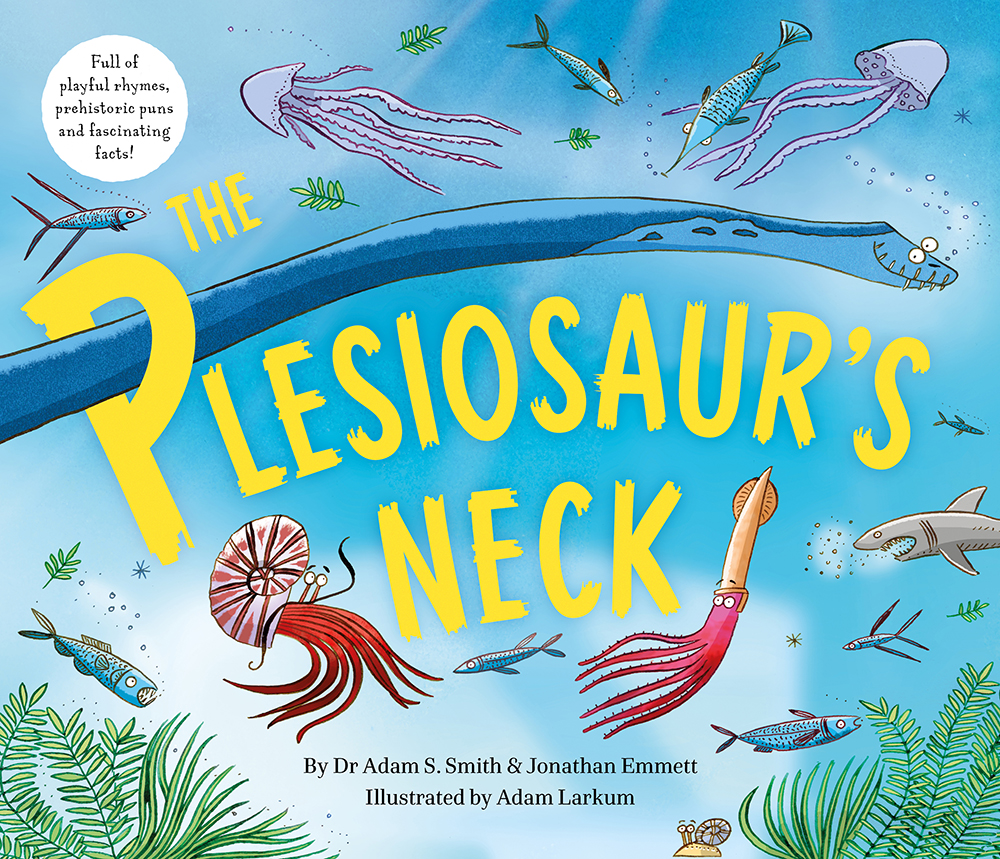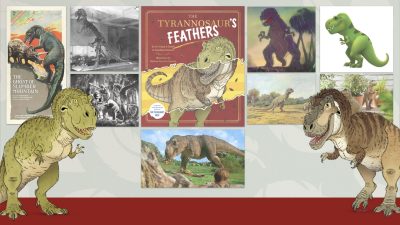How the “Pug Fish” got its Name

The Plesiosaur’s Neck is an unusual book in many ways – there can’t be many rhyming picture books that are informed by so much scientific detail. Another unusual aspect of the book is that its creation led to one of the creatures featured in it being designated a common name in addition to its existing Latin genus name .
All of the plants and animals featured in the book are from the Late Cretaceous epoch, the period of time between 100 and 66 million years ago, when the star of the book, Poppy the Albertonectes plesiosaur, was alive. If you examine Adam Larkum’s illustrations closely you will spot a six-finned prehistoric fish swimming alongside Poppy on some of the spreads. This fish has the latin name Gillicus and lived in the Western Interior Seaway, a large inland sea that existed in the Cretaceous Period in what is now central North America. One well-known fossil specimen of Gillicus has the nickname the “Fish-Within-A-Fish” having been found inside the stomach of a fossilised bulldog fish (Latin name Xiphactinus).
The Gillicus fossil known as the “Fish-Within-A-Fish” on display at the Sternberg Museum of Natural History in Hays, Kansas. (Photo: Spacini at English Wikipedia, CC BY-SA 3.0, via Wikimedia Commons).
Having asked illustrator Adam Larkum to populate his illustrations with Cretaceous creatures, co-author Dr Adam Smith and I thought it would be good to include a Spotter’s Guide at the back of the book to allow readers to identify some of the more notable animals. So we drew up a list of candidates. I felt that the animals should be identified by their common names, such as the wonderfully titled “sabre-toothed herring”, rather than their Latin genus names, which felt less appropriate for a picture book for young children. Unfortunately one of the prehistoric fish we had selected – the Gillicus – did not have a common name.
Dr Adam was keen to include the Gillicus in the Spotter’s Guide, so he contacted Mike Everhart, a US palaeontologist who is an authority on the fossil creatures from the Western Interior Seaway, to explain the situation and ask if Mike would be willing to give the Gillicus a common name. Mike graciously agreed to the request and – reasoning that the Gillicus should have a “smaller and cuter” name than the bulldog fish with which it is associated – christened it the “pug fish”. You can read a short post Mike wrote about the naming here.
And – in addition to being responsible for the pug fish getting its name – The Plesiosaur’s Neck is the first time the common name has been cited in print. That’s quite a claim for a children’s picture book!












